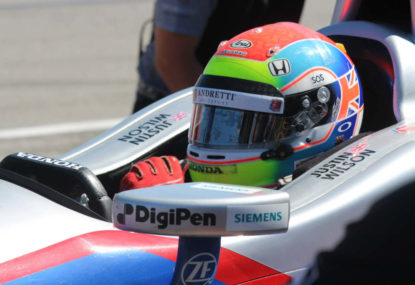Chinese Grand Prix talking points: Stroll has become the most hated F1 driver in a long time - but that's simply an unfair call!
The absolute vitriol against the Canadian that has come from the incident is beyond reprehensible.

The freak accident that took the life of British IndyCar driver Justin Wilson will accelerate the push for closed cockpits in open-wheel categories.
Closed cockpits could protect a driver’s head from flying debris, an occurrence that appears to be on the rise with tragic consequences.
As former Formula One driver Max Chilton pointed out, “The cockpit area, our heads, is the one vulnerable area left on the car.”
He added, “It’s something we’ve got to get a hold of. I know it was a freak accident, but there’s definitely more we can do.
“It’s always a freak accident which is going to get you and I want to find a way, with the racing community, that we can get a hold on it, and try and reduce the numbers because there’s been too many recently.”
But closed cockpits present their own problems. While protecting drivers from flying debris and contact from another car or wall, they can be restrictive in terms of a driver’s vision and ability to quickly get out of the car, not to mention the heat issues in such a confined space.
There’s also the concern over whether the cover could protect the driver from a greater head-on impact. In the case of the late Formula One driver Jules Bianchi, a report into his head-on collision with a recovery vehicle found a closed canopy would have done little to protect his head given the huge speed and force of the hit.
Also, the cover could increase the number of parts that could fly off a car and injure another driver or spectator. The current generation IndyCar, for example, has been criticised for the number of aerodynamic winglets and bodywork causing injury to both fans and drivers.
A fan was injured by a piece of debris during the season-opener at St Petersburg, highlighting the problem of aerodynamic devices flying off the new-look body kits.
Two closed-cockpit designs are being considered: a full closed-cockpit canopy, which can be restrictive in terms of a driver’s ability to get out quickly, or hoop system, which deflects debris away from the driver but would be less suitable for harder impact.
Studies into the options available will intensify following Wilson’s accident, and will inevitably lead to some form of protection that is likely to change the face of open wheelers.
While many insist that open-wheelers need to retain an open cockpit in order to differentiate themselves from sportscars, safety must be paramount, and this needs to be the next evolution of motorsport safety.